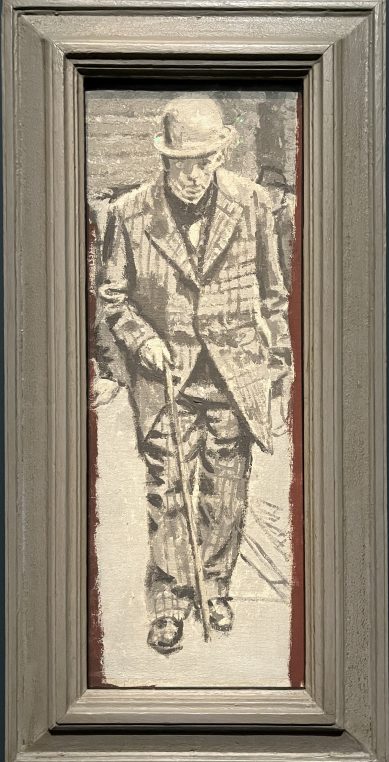Virtually unknown in France, British painter Walter Sickert, was born in Munich in 1860 from a Danish father and an Anglo-Irish mother raised in Dieppe. They moved to London when he was 9 and even though he spent six years painting in Dieppe with his friend Jacques Emile Blanche, and many more years in Paris where he showed at Bernheim Jeune and Durand-Ruel, this is his first retrospective in France. We owe this superb exhibition at Petit Palais, to Delphine Lévy, former director of Paris Musées, who died in 2020. She was a foremost expert on Sickert and had conceived the show which is curated in France by Clara Roca and in Great Britain at the Tate Britain by Alex Farquharson. His eccentricity and his taste for secrecy rivaled with his numerous disguises and chameleon attitude and he started a brief acting career before becoming a full time artist.
Very influenced by Whistler whom he apprenticed with and later by Degas who became a friend, he borrowed from him vivid colors and the construction of his themes. After a room showing 8 self portraits in very different styles, including one in grisaille modeled after press clippings, we are transported to a a large semi circular purple room where his “scandalous” paintings of music hall from the late 1880’s. His mother ‘s mother was a dancer who had a career in Australia and this could have influenced his taste for night life. To make a living, he starts doing portraits of artists and friends and eventually leaves for Venice and Normandy where he gets interested in architecture. There he also portrays Victor Lecourt, who owns a well known restaurant near Dieppe and starts borrowing the colors of the Nabis in the background and is inspired by Vuillard for the interiors.
A whole room is devoted to views of St Marks in Venice and to Saint Jacques church in Dieppe. And a fabulous painting in pink and green of Hotel Royal is exhibited. An interesting room follows where a painting by Lucian Freud inspired by Sickert’s naked ladies from 1906, illustrates his influence in the XX th century. And “Scenes of private life” show “Two women on a sofa”, domestic scenes like “Granby Street” and “Boredom” his most famous work, where the artist depicts loneliness within married life and the difficulty of communication between human beings.
The exhibition is full of surprises in style and in topics. Until January 29 at Petit Palais.
Share this Post





3 Comments on “Walter Sickert, painter and transgressor”
Is this the painter who was suspected of being Jack the Ripper and was Churchill’s painting instructor?
Yes it is
The idea that he was Jack the Ripper is complete nonsense.